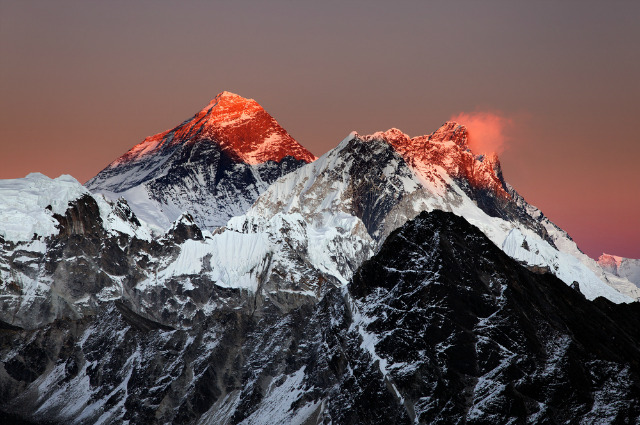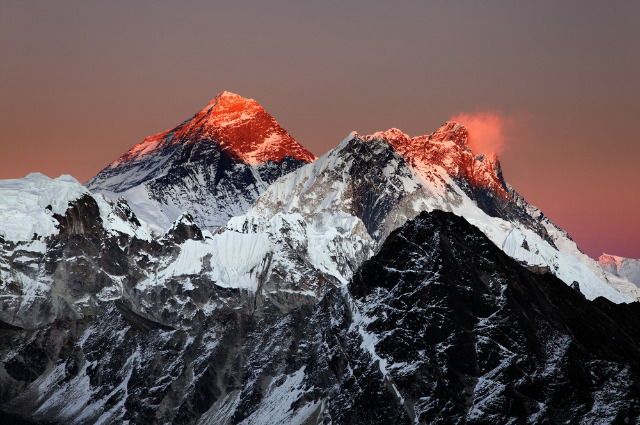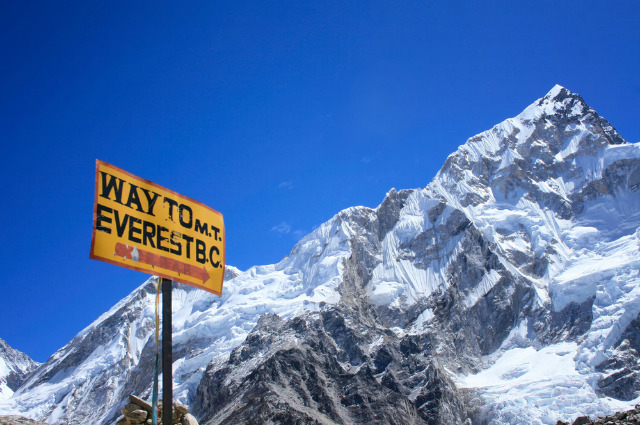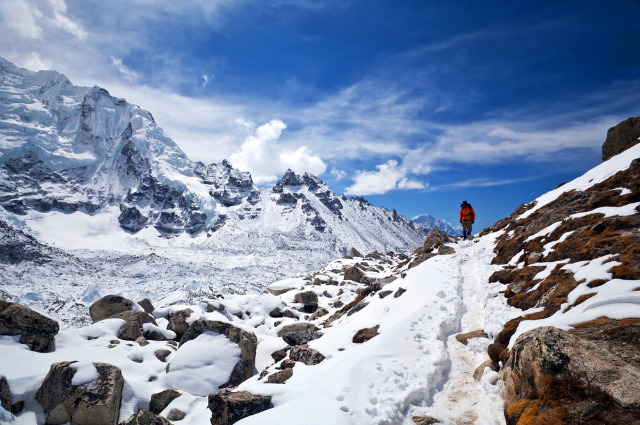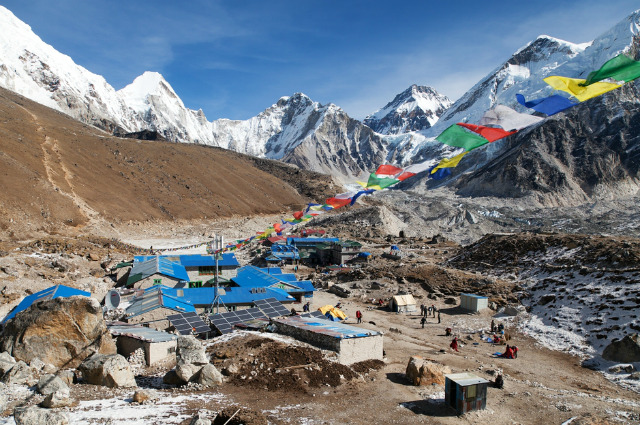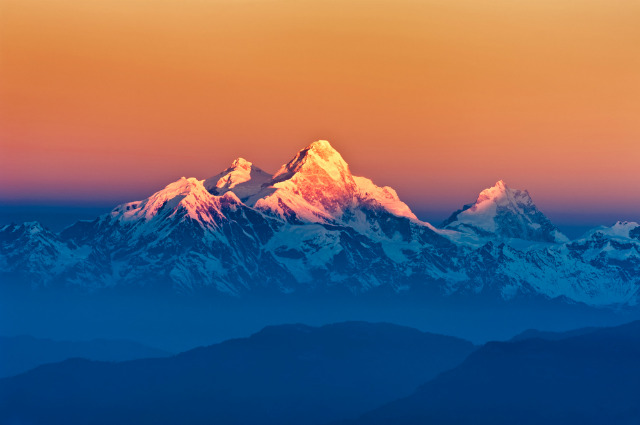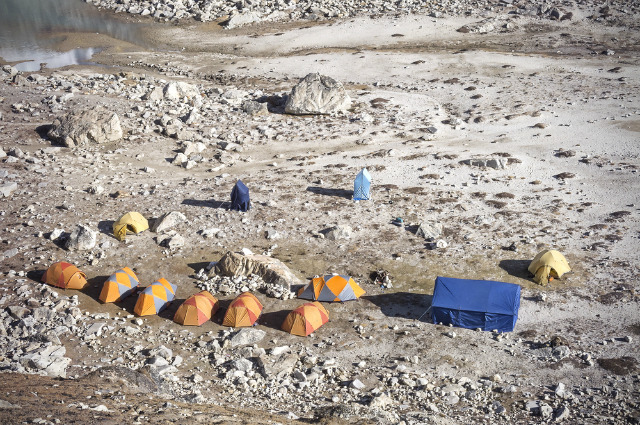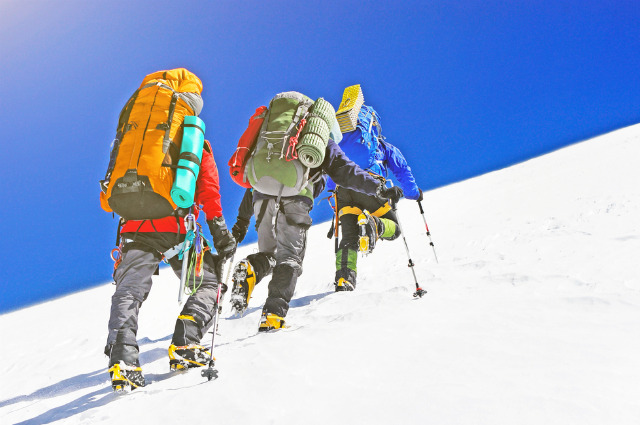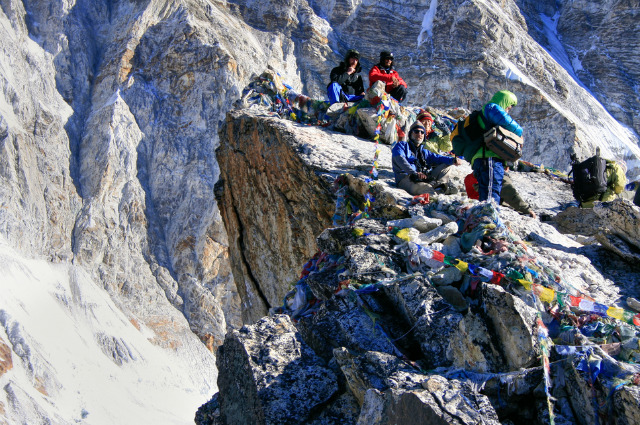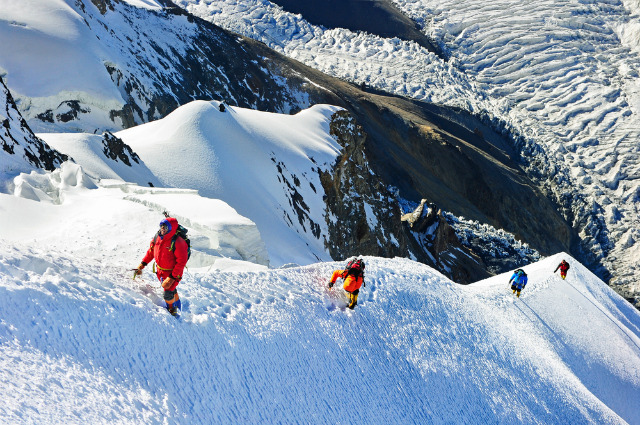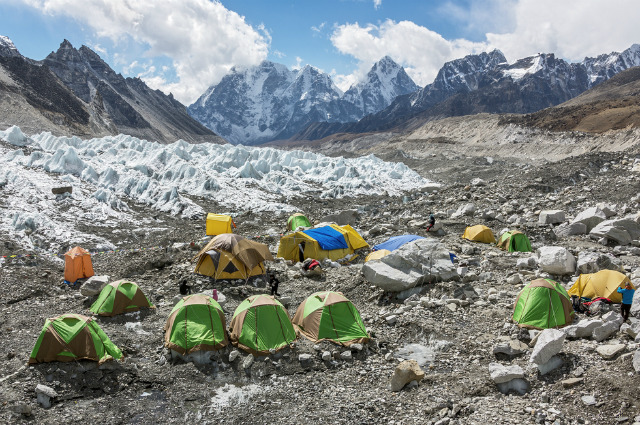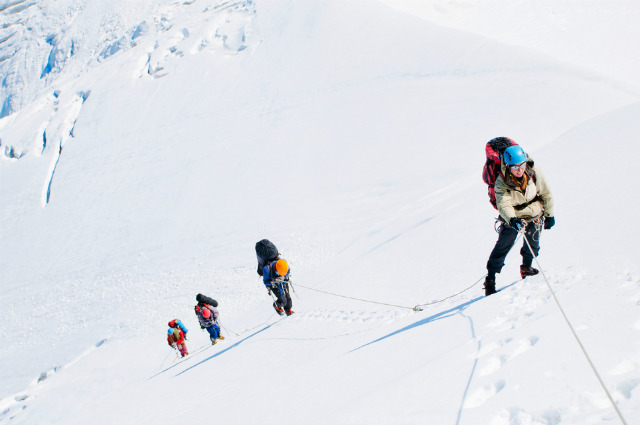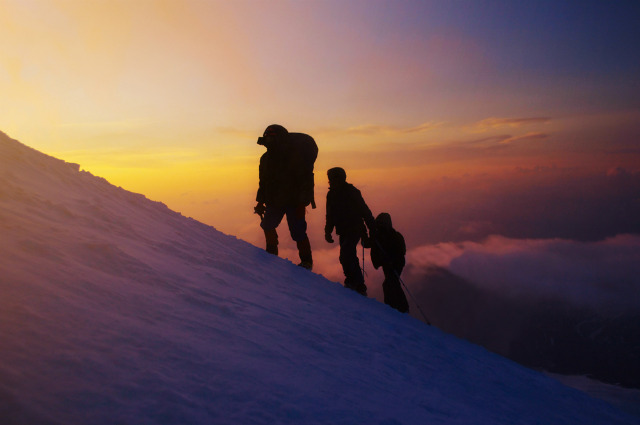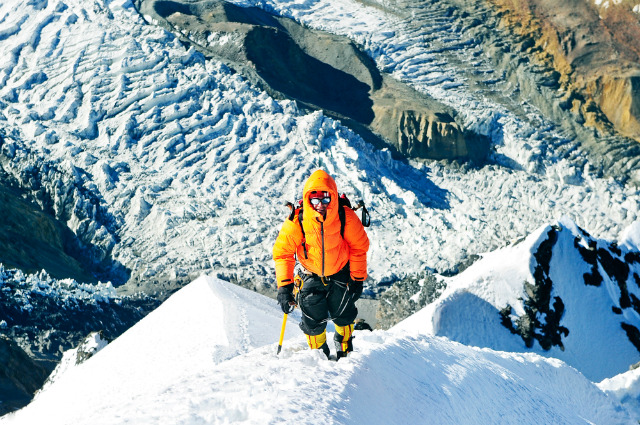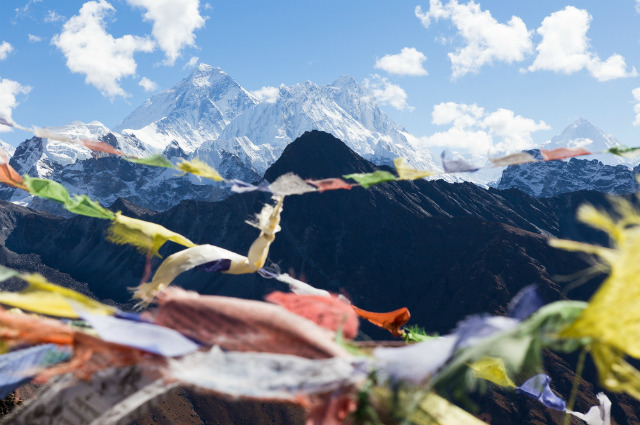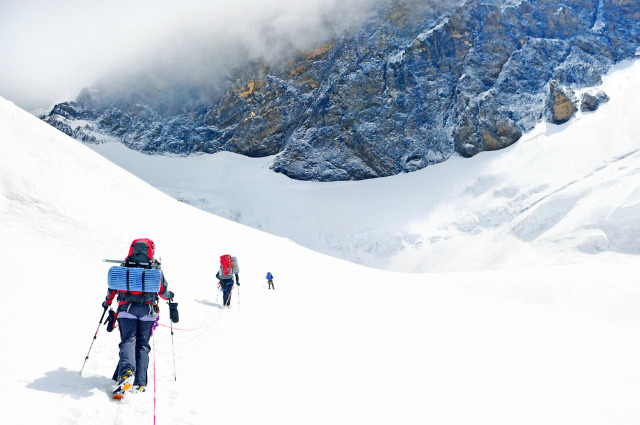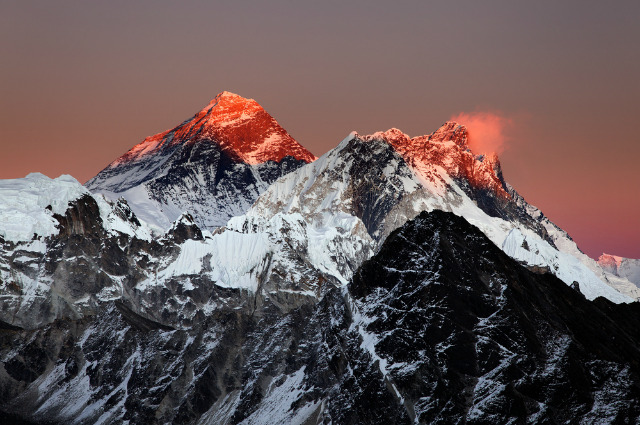The Ultimate Guide To Everest
The Ultimate Guide to Everest
Before Edmund Hillary and Tenzing Norgay made it to the summit, every other attempt resulted in either surrender or death. Their successful ascent was a monumental feat and a first for mankind, but what about now?
More than 60 years after Hillary and Norgay reached the peak, thousands of others have made it to the top (albeit under very different circumstances) and hundreds have died trying. Critics of modern day Everest expeditions have said that today's climbs are no big deal and some even say that Everest isn't a climb at all, so what is it actually like to summit Everest? And how does the average person even go about it?
For answers, we turned to two people who have not only been there, but have devoted much of their lives to Everest. Mountaineer Alan Arnette and Founding Physician of Everest ER Dr. Eric Johnson help answer some of the most pressing questions surrounding Everest.
What to Expect
"An Everest climb is a test of mental toughness and physical strength," said Alan Arnette, a mountaineer, Alzheimer's advocate and leading authority on Everest. Arnette has completed 36 major mountaineering expeditions since he began climbing at age 38 and has summited both K2 and Everest.
"Most [Everest] expeditions take you away from home for two months; have long periods of waiting for your body to adjust to the high altitude or for suitable weather for climbing. Once you go for the summit, you have to be clear on why you are climbing, to keep going often in harsh conditions, where your mind screams 'turn back'."
The Overview
"There are four main parts to an Everest climb," said Arnette. To start, "most people take about 10 days to trek from the tiny airstrip at Lukla (9,400 feet) to Everest Base Camp at 17,500 feet, giving the body time to adjust to the altitude."
After that, people continue their ascent up Everest, stopping at camps along the way and "eventually sleeping at 23,500 feet without supplemental oxygen," he said. "Many teams today use nearby trekking peaks, for example Lobuche at 20,075 feet to reduce the number of climbs through the Khumbu Icefall."
After the body has adjusted to the altitude, "climbers wait for a calm weather forecast for the five days it will take to go from base camp to the summit and back." And then they attempt their summit.
"The final phase is the trek back out and the flight back to Kathmandu."
How Long Will It Take?
From the time climbers first arrive at base camp, the whole climb will typically take anywhere from six to nine weeks, Arnette said. From arriving at Base Camp to reaching the summit, that portion of the trip takes an average of 40 days. Arnette also mentioned that acclimatization cannot be rushed.
What Are the Requirements?
"Most reputable guide services require experience on other high-altitude mountains like Denali (20,310 feet) or Aconcagua (22,841 feet). The best guides require a climb of a 7,000-meter or 8,000-meter mountain like Cho Oyu at 26,907 feet," Arnette said. The aim of these requirements is to determine whether or not a climber is prepared for the harsh freezing conditions and high altitude.
How to Plan a Trip
Today, most people planning to climb Everest opt to take the journey with an outfitter. These companies (and their price tags) vary widely, but in general an outfitter provides support staff, hashes out the details and might even include the option to rent gear.
Some people choose to go without an outfitter or guide, but even those climbers still need to pay for permits, transportation, gear and most "solo" climbers higher Sherpa to help with their trek.
How to Train for the Ascent
"The best training, in my experience, is real-world training where you hike for eight hours with a heavy pack up and down mountains. A solid training [program] will take a year to complete before the Everest climb," Arnette said. Most people take on a "dedicated training program" that builds cardiovascular fitness and total-body strength. Arnette said many hire personal trainers and supplement with "running, cycling and interval training."
The ‘Other’ Part of Training
"But the most important muscle to train is your mind," Arnette said. "You must be able to know how far and how hard to push your body safely and that comes with experience."
Dr. Eric Johnson, associate medical director of crisis response firm Global Rescue and a founding physician of Everest ER, the medical clinic located at Mt. Everest Basecamp, also stressed the importance of mental strength. "Mentally, you need to be in the 'right' place to deal with all the challenges of this difficult environment."
How Fit Do You Actually Need to Be?
"I always say you need to be in 'Everest Shape', which is significantly [better] than the best shape of your life," Arnette said. "Your body needs to pump blood to your legs at altitudes where airplanes fly. You need to be able to carry packs with oxygen bottles, water, extra layers and food that can weigh up to 25 pounds—[that's] a lot at 28,000 feet."
How Much will It Cost?
There are at least a dozen factors that go into pricing out an Everest trip and prices change year-to-year, but those hiring an outfitter can expect to pay anywhere from $30,000 to $70,000 for the service—and that doesn't usually including your international flights or your personal gear. Large group expeditions can cost upwards of $100,000 per person.
Choosing an Outfitter
"There are many guides that span the price, experience and safety spectrum," Arnette said. "My best advice is to match your guide with the kind of experience you are seeking. In other words, [do you want] all the luxuries or just the basics? Do you want to carry more of your own gear or use the excellent Sherpa guides?"
"The most expensive expeditions have several non-Sherpa Guides in addition to a generous ratio of Sherpas to members. They offer heaters in the dining tents, movie nights and more," he said. "At the other end of the spectrum are the lowest cost expeditions where the climbers carry their own gear, cook their own meals at the high camps and are very reliant on their own skills and experience for a safe experience."
Top Outfitters on Everest
There are tons of outfitters that lead trips on Everest, excellent companies from all over the world, and when it comes down to choosing one, you need to weigh your priorities and do your own research. Three outfitters that come highly recommended are International Mountain Guides, Alpine Ascents International and RMI Expeditions.
Crucial Gear
"The most important gear are boots, gloves, layers and sleeping bag. Everest can be brutally cold so protecting hands and feet from frostbite is critical to a safe experience," Arnette said. "Also getting a good night's sleep is important for maintaining energy so a down sleeping bag rated to 20 or 40 degrees below zero Fahrenheit is important."
On top of quality apparel and sleeping bags, climbers will also need to look into technical equipment, camp supplies, packs and so much more. Alpine Ascents International has a comprehensive list on their website.
How Dangerous is it?
"Danger is a 'relative' term," Johnson said. "My advice is that when you approach climbing an 8000-meter peak, risks can be somewhat mitigated but never completely removed."
A grave reminder of those risks lies in the very recent past.
"In modern times (post 2000) about six people have died each year, mostly from falls—but the last two years have been tragic," said Arnette. "With 16 Sherpas killed in the Khumbu Icefall by a serac release on April 8, 2014 and 19 people killed on April 25, 2015 at Everest Base Camp from an avalanche triggered off Pumori's ridge by a magnitude 7.8 earthquake almost 200 miles away in Nepal."
Be Prepared
"The biggest danger for an Everest climber is to go unprepared and inexperienced. Many assume Everest is a safe walk-up with no real 'climbing' required," said Arnette. "They assume Sherpas and other climbers will help them if they get into trouble. [But] the harsh reality is that everyone is fighting to survive on Everest and it's not uncommon for a climber in trouble to go unnoticed by other climbers...That's why it is critical to be experienced, self-sufficient and go with a team you know and trust."
Danger By the Numbers
"From 1921 to 1999, 170 people died on Everest with 1,169 summits. But the deaths drastically declined while summits increased five-fold in this century," said Arnette. "From 2000 to 2015 there were 5,832 summits and 112 deaths. However, two years skewed the deaths rates on the south, with 16 in 2014 and 19 in 2015."
He said that altitude and illness related deaths still top the list with 90 fatalities, while another major cause of death are falls, with 67 fatalities, according to the Himalayan Database through autumn 2015. "The Icefall Collapse was way down the list at 15 deaths. However this is another one of those stats that is heavily skewed by one disaster. Adding in the 16 deaths in 2014, the Khumbu Icefall now is the location of 31 deaths."
